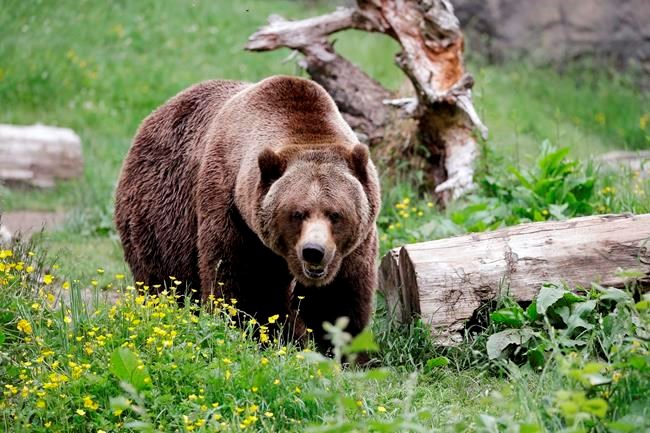EDMONTON — Grizzly bears are doing their best to get along with people, but it still isn't enough.
Newly published research concludes that without large wilderness areas to replenish their numbers, grizzlies would disappear from landscapes they share with humans.
"The persistence of bears near people, when we see them along highways or near towns, they're really propped up by the fact they exist near some sort of secure wilderness," said Clayton Lamb, a University of Alberta biologist and lead author of a paper published in the Proceedings of the National Academy of Sciences.
Researchers found bears in populated areas in Alberta and British Columbia have even changed how they hunt in an attempt to share living space with humans.
"The bears are doing what they can," Lamb said. "The difference might have to be made up by us."
The study set out to examine an emerging phenomenon in wildlife conservation — large carnivores re-establishing themselves on mixed landscapes including cities, highways, rural communities and patchworks of natural habitat.
It digested 41 years worth of mortality, movement and demography among 2,669 grizzlies over nearly 400,000 square kilometres of British Columbia.
It found mortality has increased steeply with the amount of human impact measured through an index that includes human population, land use, infrastructure, coastlines, roads, railroads and navigable rivers.
Deaths have outnumbered births and the difference is being made up through emigration of young grizzlies from nearby wilderness. For every point the index increases, a local bear population must increase the number of individuals it draws by about two per cent.
"Grizzly bear range is quite tied to the distance from some secure piece of wilderness," said Lamb.
That's despite the grizzlies' efforts to adapt to humans. The study found young, newly arrived bears gradually learned ways to avoid contact, such as hunting and gathering at night.
Adolescent bears in areas dominated by humans have increased their nocturnal time by up to three per cent annually, which has led to corresponding increases in survival. The cost, however, is steep.
The scientists found it takes 14 years for a grizzly to learn how to co-exist with humans. For every bear that makes it, 29 don't.
"A lot of those bears would have been born on a mountaintop 10 kilometres away and lived with mom in an avalanche chute and lived a normal bear life," Lamb said.
"Then they find a home near town and get lured in by an apple tree. The gauntlet they have to run is very difficult."
The study shows that high mortality has impacts far from where the deaths take place. Bears dying in mixed-used areas draws more grizzlies from the wilderness to take their place.
"Conflicts with people have rippling effects on (bear) populations far removed," Lamb said.
Highway overpasses are one good way to reduce deaths, he suggests. But humans living with bears have to get better at removing attractants such as roadkill or fruit trees to end the bears' constant, often fatal, migration from the wilderness.
"We're not quite there," said Lamb. "The system relies quite heavily on adjacent wilderness."
This report by The Canadian Press was first published July 7, 2020
— Follow @row1960 on Twitter
Bob Weber, The Canadian Press



